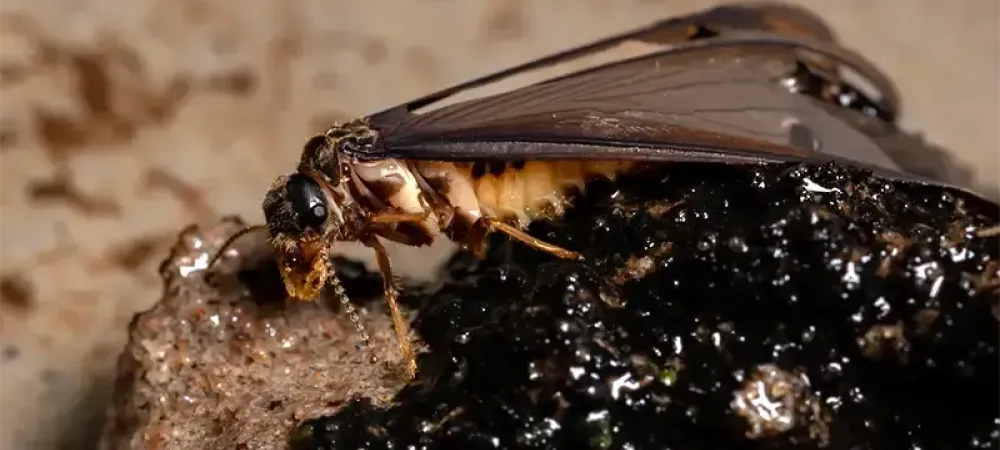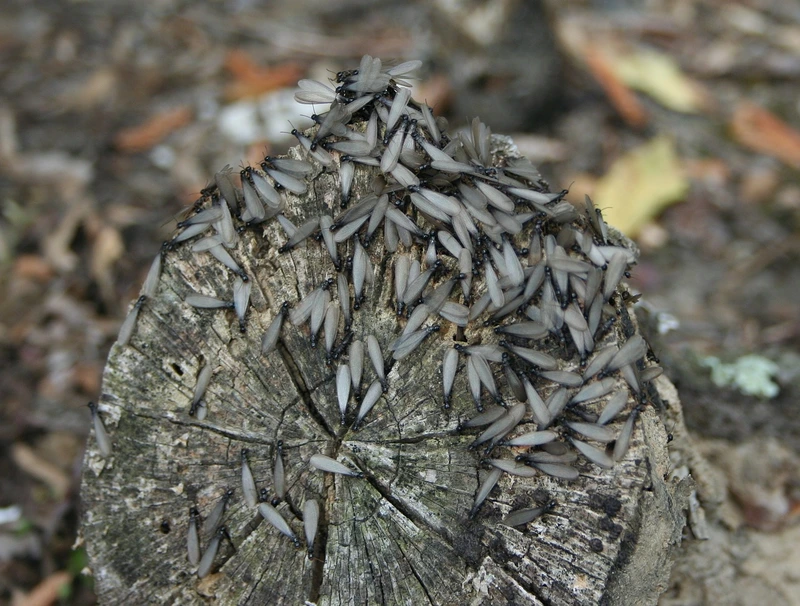What Do Termite Swarmers Look Like?

Termites, those tiny terrors of the insect world, are notorious for their ability to wreak havoc on wooden structures. While the entire termite colony plays a crucial role in this process, it's the termite swarmers that often capture our attention due to their distinctive appearance and behavior. In this blog, we'll delve into the intriguing world of termite swarmers, exploring what they look like and why understanding their characteristics is essential for effective termite control.
What Are Termite Swarmers?
Termite swarmers, also known as alates or reproductive termites, are a specialized caste within the termite colony. Their primary purpose is to establish new colonies by reproducing and becoming the kings and queens of a budding termite society. Unlike worker and soldier termites, swarmers have wings, allowing them to embark on a nuptial flight to find a suitable mate and establish a new colony.
How To Identify Termite Swarmers
Unlike other termites, swarmers have a few unique characteristics that set them apart, including:
- Wings: Termite swarmers are equipped with two pairs of wings, which they shed shortly after mating and establishing a new colony. The wings are equal in size and extend beyond the termite's body. The presence of wings is a key distinguishing feature of swarmers and sets them apart from other castes.
- Body Coloration: The color of termite swarmers can vary depending on the species. Generally, they are dark brown or black, but some species may exhibit lighter colors such as tan or yellow. The coloration is influenced by factors like diet, environment, and species variations.
- Body Segmentation: The body of a winged termite is divided into three distinct segments: the head, thorax, and abdomen. The head usually features a pair of compound eyes and powerful mandibles, which may vary in size and shape among different species.
What Makes Winged Termite Special?
Termite swarmers engage in a synchronized event known as nuptial flight, during which thousands of reproductive termites take to the air simultaneously. This phenomenon is triggered by specific environmental conditions, such as warm temperatures and high humidity. Nuptial flights often occur after rain, usually during the spring or fall.
The primary objective of the nuptial flight is for male and female swarmers to find a mate. Once a suitable partner is found, the pair will land, shed their wings, and begin the process of establishing a new colony in a suitable location. The male and female become the king and queen, respectively, and start laying eggs to kickstart the colony.
Common Signs of Swarmer Termites
Identifying swarmer termites is crucial for detecting a potential termite infestation early on. Here are common signs of swarmer termites that you should be aware of:
- Discarded Wings: One of the most noticeable signs of swarmer termites is the presence of discarded wings. After the nuptial flight, swarmers shed their wings, and these wings can often be found near windows, doors, or other entry points. The wings are usually of equal length and may be translucent.
- Swarming Behavior: Witnessing a swarm of flying insects, especially around light sources like windows or outdoor lights, is a strong indicator of termite activity. Termite swarmers are attracted to light and may be seen flying in large groups during their nuptial flight.
- Time of Year: Termite swarmers typically emerge during specific times of the year, which can vary depending on the termite species and geographic location. In Pennsylvania, swarms occur in the spring or fall, particularly after rain.
- Presence of Mud Tubes: Subterranean termites, which are responsible for a significant portion of termite infestations, build mud tubes to travel between their nest and a food source. While swarmer termites themselves don't create these tubes, the presence of mud tubes in or around your home is a sign of an established termite colony of subterranean termites.
- Wood Damage: While swarmer termites don't directly cause structural damage, their presence indicates the potential for an infestation. Subterranean termites, for example, can cause extensive damage to wood over time. Look for signs of damaged or weakened wood, such as hollow-sounding timbers or wood that crumbles easily.
- Visible Worker Termite or Soldiers: In some cases, you may spot termite workers or soldiers alongside swarmers. These termites have different roles within the colony, and the presence of multiple castes suggests an active termite colony.
- Noises in Walls: In rare cases, homeowners may hear faint rustling or tapping sounds coming from within walls. While this is not a common sign, it can indicate termite activity.
- Frass (Termite Droppings): Drywood termites, another termite species, push their droppings (known as frass) out of tiny holes near their nests. If you find small piles of pellets resembling sawdust or coffee grounds, it could be a sign of drywood termite activity.

What To Do If You Find Swarmer Termites In Your House?
Discovering swarmer termites in or around your home can be concerning, but taking prompt action is crucial to mitigate the potential damage. Here are steps you can take if you suspect or confirm the presence of swarmer termites:
1. Identify and Confirm
Ensure that what you're seeing are indeed swarmer termites. Look for the presence of wings, as swarmers are the only caste with wings. If you find discarded wings or flying termites, it's a strong indicator of a termite infestation.
2. Document and Take Pictures
Document the areas where you find swarmers and take clear pictures. This documentation can be useful for professional pest inspectors and for tracking changes over time.
3. Don't Disturb the Swarmers
While it might be tempting to try and eliminate the swarmers on your own, disturbing them can make it difficult for professionals to assess the extent of the infestation. Avoid spraying insecticides or attempting DIY treatments that might scatter the swarmers.
4. Contact a Pest Control Professional
As soon as you suspect a termite infestation, it's crucial to contact a licensed pest control professional. Termite infestations are complex and often require specialized knowledge and tools for effective treatment. A professional can conduct a thorough inspection, identify the termite species, assess the extent of the infestation, and recommend an appropriate treatment plan.
5. Get a Termite Inspection
A comprehensive termite inspection by a qualified professional is essential. This inspection will not only help in confirming the presence of termites but also in determining the best course of action for treatment and prevention.
6. Treatment Options
Depending on the severity of the infestation and the termite species involved, treatment options may vary. Common treatments include:
- Chemical Treatments: Liquid termiticides are applied to the soil around the foundation of the home to create a barrier against termites.
- Bait Stations: These are strategically placed around the property to attract and eliminate termite colonies.
- Foam Treatments: Foams can be injected into termite galleries in walls or other inaccessible areas.
7. Address Moisture Issues
Termites are attracted to moisture. Address any water leaks or drainage issues around your home to make the environment less conducive to termite infestations.
8. Monitor and Prevent
Even after treatment, it's important to monitor your home for any signs of termite activity. Regular inspections and preventive measures, such as maintaining a termite barrier, can help prevent future infestations.
9. Educate Yourself
Learn about the species of termites in your region, their habits, and how to make your home less appealing to them. This knowledge can be valuable in preventing future infestations.
Remember, termite control is a job best left to professionals. DIY treatments may provide temporary relief, but they often do not address the root of the problem. By recognizing signs of infestation, acting swiftly, and seeking professional assistance, you increase the chances of effectively eliminating the termite infestation and protecting your home from further damage.
Call Professional Termite Exterminators
Whether you have found termite wings, are trying to identify a type of termite, or are looking to be proactive in the battle against termites, there is no one better to have on your side than Witt Pest Management. With over 100 years of industry experience, our team of termite exterminators is here to provide exceptional service and proven results. Contact our team today!
